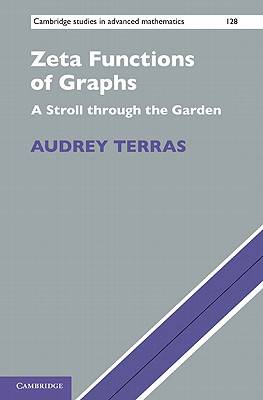
- Afhalen na 1 uur in een winkel met voorraad
- Gratis thuislevering in België vanaf € 30
- Ruim aanbod met 7 miljoen producten
- Afhalen na 1 uur in een winkel met voorraad
- Gratis thuislevering in België vanaf € 30
- Ruim aanbod met 7 miljoen producten
Zoeken
Omschrijving
Graph theory meets number theory in this stimulating book. Ihara zeta functions of finite graphs are reciprocals of polynomials, sometimes in several variables. Analogies abound with number-theoretic functions such as Riemann/Dedekind zeta functions. For example, there is a Riemann hypothesis (which may be false) and prime number theorem for graphs. Explicit constructions of graph coverings use Galois theory to generalize Cayley and Schreier graphs. Then non-isomorphic simple graphs with the same zeta are produced, showing you cannot hear the shape of a graph. The spectra of matrices such as the adjacency and edge adjacency matrices of a graph are essential to the plot of this book, which makes connections with quantum chaos and random matrix theory, plus expander/Ramanujan graphs of interest in computer science. Pitched at beginning graduate students, the book will also appeal to researchers. Many well-chosen illustrations and diagrams, and exercises throughout, theoretical and computer-based.
Specificaties
Betrokkenen
- Auteur(s):
- Uitgeverij:
Inhoud
- Aantal bladzijden:
- 252
- Taal:
- Engels
- Reeks:
- Reeksnummer:
- nr. 128
Eigenschappen
- Productcode (EAN):
- 9780521113670
- Verschijningsdatum:
- 27/12/2010
- Uitvoering:
- Hardcover
- Formaat:
- Genaaid
- Afmetingen:
- 155 mm x 231 mm
- Gewicht:
- 517 g

Alleen bij Standaard Boekhandel
+ 170 punten op je klantenkaart van Standaard Boekhandel
Beoordelingen
We publiceren alleen reviews die voldoen aan de voorwaarden voor reviews. Bekijk onze voorwaarden voor reviews.











